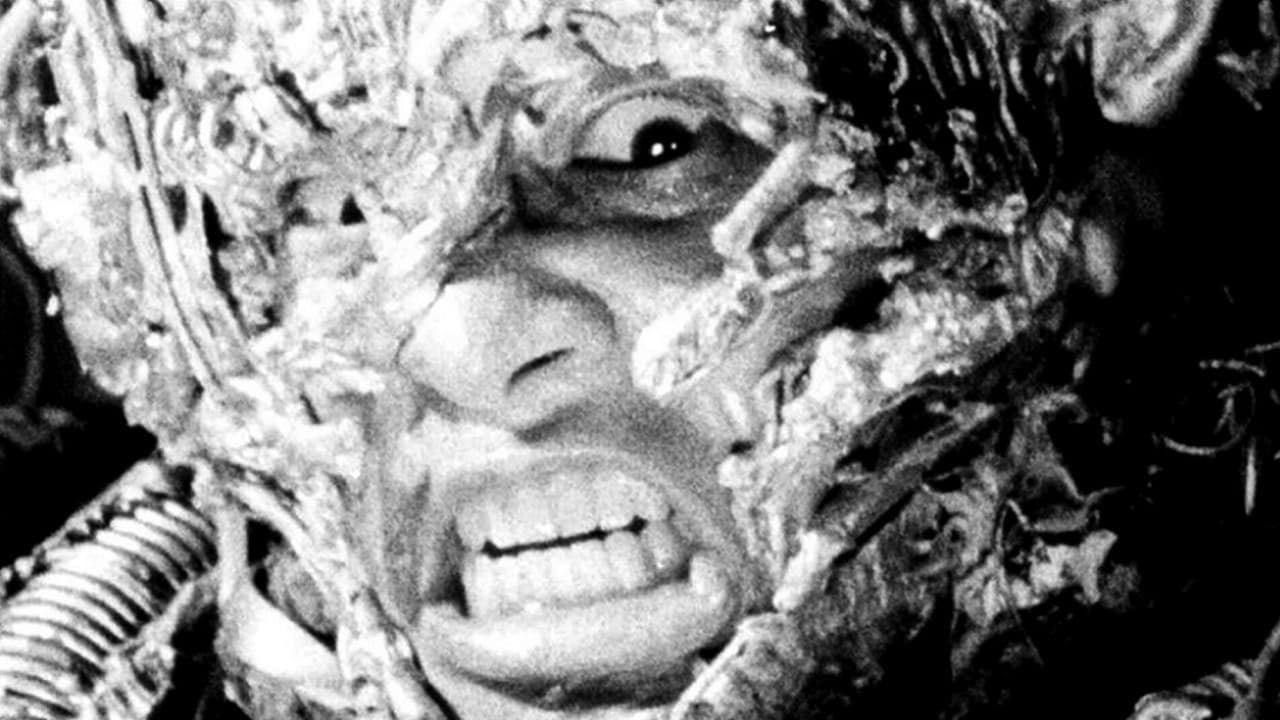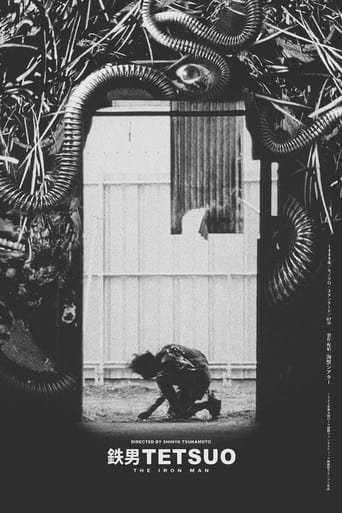

Hear me out, before you condemn me. WE RELY ON TECHNOLOGY NOW THAT WE CAN'T LIVE WITHOUT IT! What did they countless of millions of people before us do, when they had no technology? Tetsuo could be seen as a metaphor for technology in the modern world and how it impacts our daily lives. I mean we see throughout the film that the man has all this metal stuck to him and growing in him and compare it to how technology has effected us, we have got to a stage where we can't live without it, like the man in the film, the more he fought it, the more the process progressed, until he eventually got use to it. My point is that we use all this technology and we literally can't live without it, its stuck to us like the metal was stuck to the man.I can only imagine when it was first released what people thought! "My god!", they were saying. "How absurd!", they quipped. Alas, little did the people know that this was a cautionary tale to future generations. Unfortunately, we did not heed the not too subtle warning of Tetsuo. The all too chilling end is where society is now - "Our love can put an end to this fooking world. Let's Go!" - this quote from the end of the film can be seen as our love for technology - can put will end to face to face interaction as we know it. More kids nowadays are being exposed to technology at a younger age. When I was a kid I use to ask for a bike for my birthday but now you have kids who are asking for tablets and laptops. I shudder at the thought! I make no apologies for rambling. It ends with a horrific coming together of these two men and all the accumulated metal they have obtained. Tetsuo ends with the words "GAME OVER" as opposed to "The End" after the closing credits.Not as preposterous as you would think...
... View MoreWhat is it, where is it, how will it affect me? A formulaic lower middle class ill-doing man who is slowly turned into metal through a loosely explained supernatural curse by his victim, a self-proclaimed 'metal fetishist'. Tetsuo presents itself, in essence, as a neo-surrealist assault on the senses from uncharted waters of Far Eastern imagination. This is an odd, obscure and unknown film, and for it to feature on such a list is equally bizarre, so I shall write and write until it seems right for it to. Continuing to elaborate a little on the confusing plot: As the salary-man's transformation gets more and more intense and the central character's girlfriend becomes caught up in the chaos, the fetishist, played by none other than Tsukamoto himself, begins to make personal visits to the newfound iron man's Tokyo household and reveals more ambitious plans for his transformation leading to an awesome and impeccable end sequence. Of course, there's a lot more to it than that. Tetsuo is deeply impressive for the apparatus and funds burnt: a 16mm black and white camera from a back street shop in Yokohama and about GBP10000, Tetsuo's merits, of which on face value they are scarce, but after thought and time on its content and message, they reveal themselves in a flamboyance to elevate Tetsuo to not only one of the best films of its kind, but of its era. In terms of substance, Tetsuo seems thought through meticulously and comprehensively, and if it wasn't, then Tsukamoto is a silent and subdued master behind a camera. The way that the 5 characters develop, ranging from the confused and mulled salary man come iron man himself (Tomorowo Taguchi), his whining and delicate girlfriend (Kei Fujiwara), the callous and psychotic fetishist (Shinya Tsukamoto), his haunting and chilling infected woman (Nobu Kanaoka) and the soft and silky half-time narrator: the doctor (Naomasa Musaka), is immaculate and thorough. I'd like to highlight the train station scene about a quarter of the way through, whereby Nobu Kanaoka makes her striking performance a truly memorable one when she becomes possessed by the fetishist's craft and wit. In terms of style, during this scene, the stop motion techniques used by Tsukamoto to portray the terror in the salary man's face, combined with the menacing soundtrack by Chu Ishikawa, composed entirely out of metallic objects to add to a trippy and naturalistic aura, become unstoppable. As Rene Descartes needed his 'I think therefore I am', his one indubitable truth to build his house of beliefs upon, one bold and malleable scene that showcases a master-class of style and substance is the starting point of more brilliant details of Tsukamoto's creation. Above all, what strikes home the hardest with Tetsuo is that is still remains soundly analytically ambiguous amidst such painstaking aesthetic work. The end sequence, when the fetishist's transformation comes to its apex, and Ishikawa's soundtrack emerges from its disgruntled cocoon into full colour and melody, leaves the reader with an interpretive reflection. Tetsuo could be a metaphorical protest at the destructive potential of Japan's 20th century rapid industrialisation, it could be trying to highlight revenge, sex and technology as the three most destructive forces in our world in a manner that would most definitely stick in the audience's mind, or it could be a message about something more spiritual, possibly related to karma: you mutilate the world and it mutilates you back. At the end of the day, Tsukamoto presents the firepower to please both the sadist and the intellect, which isn't easy, to say the least. It's the work of a miracle.
... View MoreOnce again, after watching a movie where the audience's general response seems to be either love/hate, I found myself stuck in the middle of the road.I really wanted to like this movie, and for a while I did. The bizarre and captivating imagery, sound effects, music, cinematography and the use of black and white all work together to create a nightmarish experience. There are some truly freaky scenes in here. Problem is, the movie drags in places, especially towards the end, where it seems to go on forever and gradually loses it's creepy, nightmarish feel, and the endless barrages of scrap metal thrown in my face starts to get tiresome. Simply put, when the movie is good, it's nightmarish, but when it's bad, it's boring as metal-man s**t.While Tetsuo has several scenes that are really effective, and the effects look pretty awesome, as the movie went on, I just found myself increasingly getting more and more bored with it. I don't know, maybe it'll grow on me if I give it a second chance, which I will probably do, because I have not seen anything like it before.
... View MoreMy acquaintance with Tetsuo began when I was roughly ten or eleven years old. When I first read the advertisement in the paper, it sounded like a typical Japanese kaiju film, and my family looked into seeing it. These plans ended when my father read a review of the film including a content warning mentioning "phallic machinery." I've only recently gotten around to seeing it.Tetsuo the Iron Man is a difficult film to comprehend or categorize. At different points, it shifts between experimental film, science fiction, and an extremely graphic horror film. It also alternates between being interesting and headache inducing.The film follows a young businessman's transformation into a metallic monster. This is Cronenbergian body horror taken to the Nth level, complete with metal growths and a disturbingly positioned pneumatic drill. Given the extremely low budget, the special effects are amazing.However, the film is at times maddeningly difficult to follow or understand. The film's point is difficult if not impossible to pry out, and the how of Tetsuo's transformation is never explained.
... View More